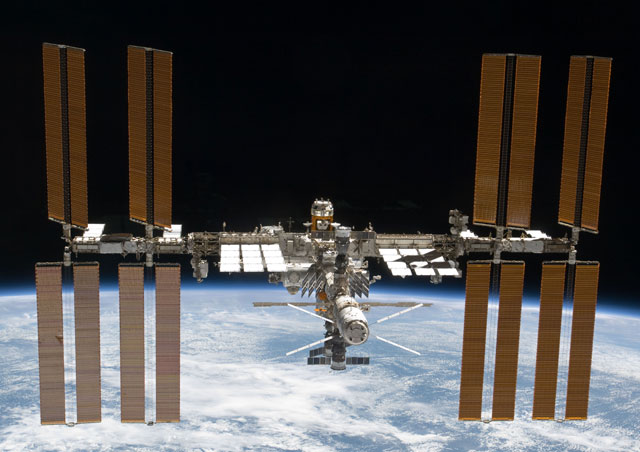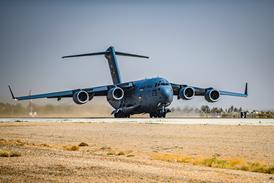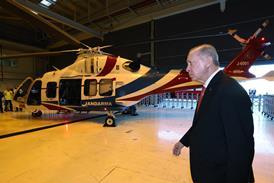The International Space Station is to be fitted with a camera dedicated to tracking meteor showers, in a bid to better understand these spectacular events.
The camera will also hopefully expand collected data on orbiting debris – both man-made and natural – so as to help position spacecraft to avoid collisions.
The device is packed with the cargo to be launched by Antares rocket from NASA’s Wallops facility on or about 15 October, in the third of Orbital Sciences’ Cygnus resupply craft.
The camera will be mounted in the station’s window observational research facility – a reinforced viewport that allows high-resolution photography from inside the station. Unlike ground-based observation – which can only be carried out at night and in clear weather – the ISS offers 560min of viewing time daily, while the station is in the Earth’s shadow during its 16 daily orbits.
Meteor project principal investigator Michael Fortenberry, of the Southwest Research Institute in San Antonio, says the ISS crew have only to adjust the focus and change hard drives as they gather video data. Built-in software will separate out clips likely to include meteors for investigation on the ground.
The camera is set to observe all 12 known major meteor showers, along with minor showers. De-orbiting spacecraft will also be observed and, adds Fortenberry, there is a chance of finding new minor showers, or showers from unexpected sources like comet Ison.
Ison is thought to have been destroyed during a very near pass of the Sun last year.
Better data should mean better forecasting, which could help ground controllers manoeuvre spacecraft clear of potential harm.

Meteors are created by the disintegration of asteroids or comets orbiting the Sun. While most burn up in the Earth’s atmosphere – causing a characteristic light streak in the sky – some are big enough to strike the ground.
By collecting data – including on light spectra – about what is hitting the planet, and correlating with other sensors, the project team also hopes to better understand the parent bodies of meteors that pose a threat to Earth.
Knowledge of meteors’ parent bodies is sketchy, but improving. The European Space Agency’s Rosetta mission made the first ever rendezvous with a comet on 6 August, and will now escort 67P/Churyumov-Gerasimenko for 18 months on its journey towards the Sun, collecting a treasure trove of data – including some to be gathered by a lander due for release in November.
Meanwhile, according to a paper published in the journalNatureon 14 August, one near-Earth object (NEO) – asteroid (29075) 1950 DA – “is a loose blob of particles that clot together, much as Moon dust collects on astronauts’ spacesuits”.
Because it is spinning quickly, 1950 DA's own gravity cannot be enough to hold it together. As a result, the cohesion is owing to van der Waals force – the weak net attraction between molecules.
The same may be true of other so-called “rubble pile” asteroids – if they are spinning fast enough. Planetary scientist Ben Rozitis of the University of Tennessee in Knoxville – co-author of the study – says this means humanity would need to take great care in any intervention designed to prevent a collision with Earth.
Specifically, he says, flying out and blowing up an asteroid would be a bad idea. Scientists do not yet fully understand the forces holding these lumps together, so the result would be unpredictable – possibly turning one threat into many.
Asteroid 1950 DA is not an immediate threat to Earth, although it will make a close pass or possible strike in the year 2880. However, after last year’smeteor airburst over Chelyabinskin Russia, humanity is keenly aware of the danger from NEOs.
The Chelyabinsk rock came literally out of the blue – ironically while scientists were watching the close pass of another, known object.
The scientists were observing asteroid 2012DA14, which weighs 130,000t and passes closer than many satellites orbit, at some 45,000km/h.
Finding NEOs is thus a priority and, thankfully, both NASA and ESA are dramatically ramping up search resources, while many scientists are working on plans for diverting NEOs from Earth-collision courses.
Detlef Koschny, who heads the NEO search at ESA, says three techniques could realistically be employed to deflect an asteroid off an Earth-collision course. One would be a kinetic impact, to "nudge" an asteroid to a new path. A second would be to send a spacecraft alongside, to act as a "gravity tractor" – the navigational ability being demonstrated by the Rosetta comet-tracking mission is exactly what would be needed. A third would be to fix an ion engine to the rock and thrust it off course.
Meanwhile, the most urgent known threat is to spacecraft – but not from the meteors that are to be the focus of the ISS’s new camera gear.
Since the space age opened with Sputnik 1 in 1957, some 4,600 launches have orbited 6,000 satellites – fewer than 800 of which are still active, according to ESA.
Many of the rest – including Sputnik – have fallen to Earth and burnt up in the atmosphere. These artificial meteors can be a pretty sight from the ground, but what is not so pretty is the junk still in orbit: 3,000 or so dead satellites, 1,800 rocket bodies, 1,000 other items discarded by space missions and thousands of fragments of debris from collisions between them.
At orbital speeds any one of these could damage or destroy a satellite, and even moderately-sized pieces endanger the ISS, which makes one or two avoidance manoeuvres a year.
ESA, NASA and the US State Department have all warnedthat unless the problem of orbiting debris is tackled, valuable orbits could become unusable and, at an extreme, human spaceflight become too risky to undertake.
Source: FlightGlobal.com























